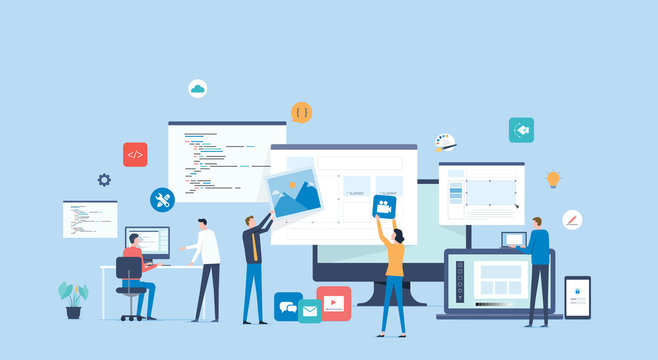In the not-so-distant past, managing human resources meant navigating through stacks of paperwork, filing cabinets, and endless manual processes. However, with the advent of technology, the landscape of HR management has undergone a significant transformation. From the humble beginnings of paper-based systems to the emergence of sophisticated cloud solutions, the evolution of HRMS (Human Resource Management Systems) has revolutionized the way organizations manage their most valuable asset: their people. In this blog post, we’ll explore the journey of HRMS, from its origins to the cutting-edge cloud-based solutions of today.
Origins of HRMS:
Before the digital age, HR management relied heavily on manual processes and paperwork. Everything from employee records and payroll calculations to performance evaluations and benefits administration was done by hand. This not only consumed a significant amount of time and resources but also left room for errors and inefficiencies.
The first signs of automation in HR emerged in the 1970s with the introduction of early computerized systems. These systems, although rudimentary by today’s standards, laid the foundation for the modern HRMS by digitizing basic HR functions such as payroll processing and employee record-keeping. However, these early systems were often complex, expensive, and limited in functionality, making them inaccessible to many organizations.
Transition to Digital HRMS:
The 1990s marked a turning point in HR technology with the emergence of more user-friendly and affordable HRMS solutions. These systems, often referred to as on-premise HRMS, allowed organizations to automate a wide range of HR processes, including recruitment, training, performance management, and employee self-service.
On-premise HRMS solutions were typically installed and maintained locally on the organization’s servers, providing greater control over data security and customization. However, they also required significant upfront investment in hardware, software, and IT infrastructure, as well as ongoing maintenance and support costs.
Rise of Cloud-Based HRMS:
The early 21st century saw a seismic shift in HR technology with the rise of cloud computing. Cloud-based HRMS solutions offered a more flexible, scalable, and cost-effective alternative to traditional on-premise systems. By leveraging the power of the internet, organizations could now access their HRMS from anywhere, at any time, using only a web browser.
Cloud-based HRMS eliminated the need for expensive hardware and infrastructure investments, as well as the burden of software maintenance and updates. Instead, HRMS vendors hosted the software on their own servers and provided seamless updates and upgrades to users. This model, known as Software-as-a-Service (SaaS), democratized access to advanced HR technology, making it accessible to organizations of all sizes.
Benefits of Cloud-Based HRMS:
The adoption of cloud-based HRMS has brought about a multitude of benefits for organizations, including:
- Improved Efficiency: Cloud-based HRMS streamline HR processes, reduce manual tasks, and automate repetitive activities, allowing HR teams to focus on strategic initiatives and value-added tasks.
- Enhanced Accessibility: With cloud-based HRMS, employees can access HR information, submit requests, and complete tasks from anywhere, using any device with an internet connection, promoting collaboration and flexibility.
- Scalability: Cloud-based HRMS are inherently scalable, allowing organizations to easily adjust their usage and functionality as their needs evolve and grow, without the need for costly infrastructure upgrades.
- Cost Savings: By eliminating upfront capital expenditures and ongoing maintenance costs associated with on-premise systems, cloud-based HRMS offer a more predictable and cost-effective pricing model, making them an attractive option for organizations with limited budgets.
- Data Security: Leading cloud-based HRMS providers implement robust security measures, including encryption, access controls, and regular audits, to safeguard sensitive HR data from unauthorized access, breaches, and data loss.
Future Trends in HRMS:
Looking ahead, the future of HRMS is poised for further innovation and transformation. Emerging technologies such as artificial intelligence (AI), machine learning, and predictive analytics are revolutionizing HR processes by enabling smarter decision-making, personalized employee experiences, and predictive insights.
Furthermore, the convergence of HRMS with other business systems such as finance, ERP, and CRM is blurring the lines between traditional silos and creating seamless, integrated platforms that provide a holistic view of the organization’s operations and workforce.
Conclusion:
The evolution of HRMS from paper-based systems to cloud solutions represents a journey of innovation, efficiency, and empowerment. By embracing the latest technologies and trends, organizations can leverage HRMS to attract top talent, optimize HR processes, and drive business success in an increasingly competitive and dynamic landscape. As we continue to push the boundaries of what’s possible, the future of HRMS holds limitless potential to transform the way we work, collaborate, and thrive.

